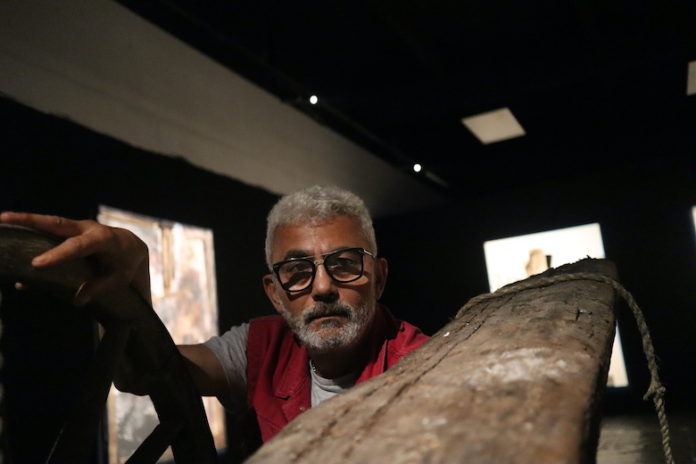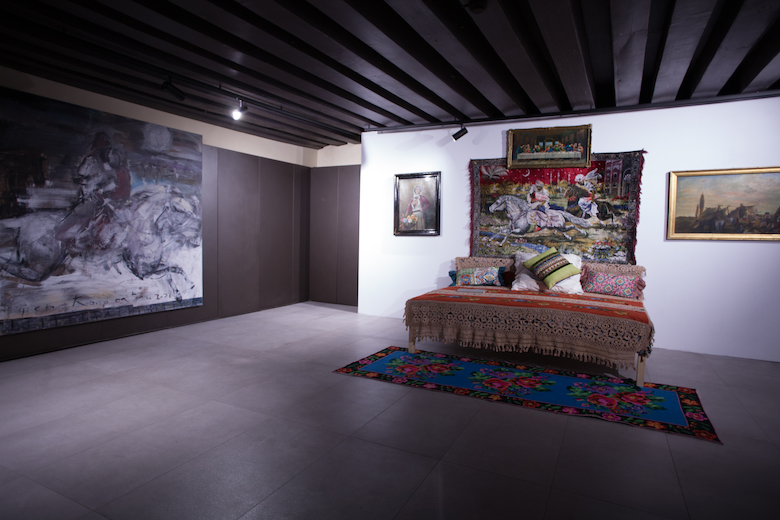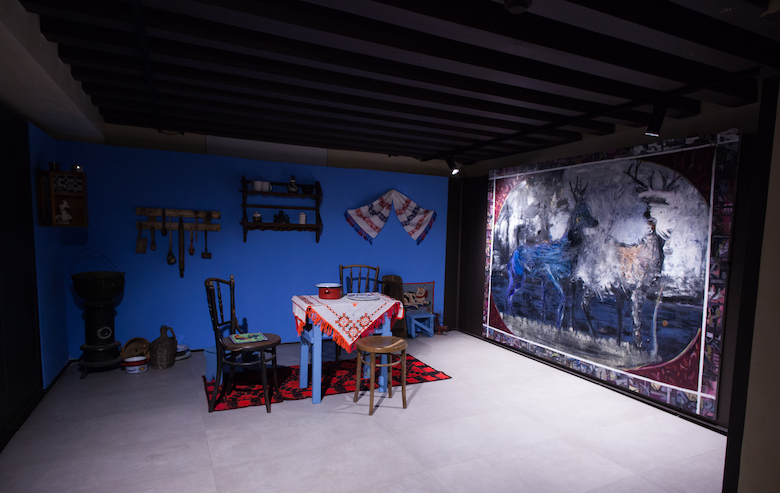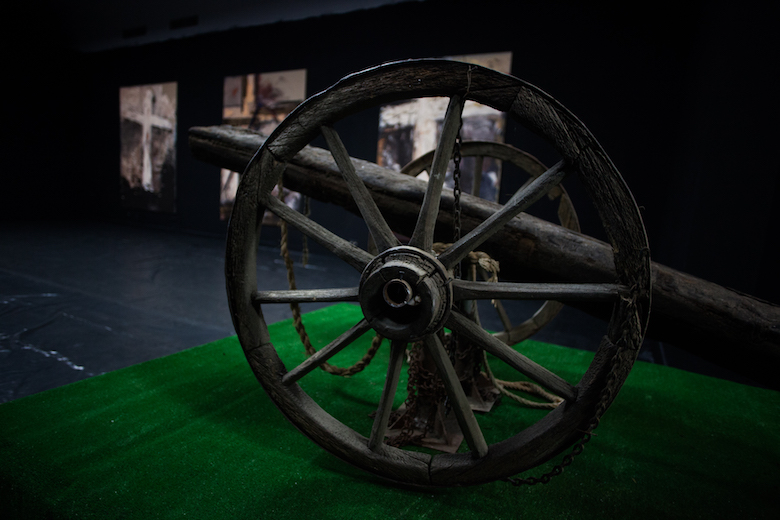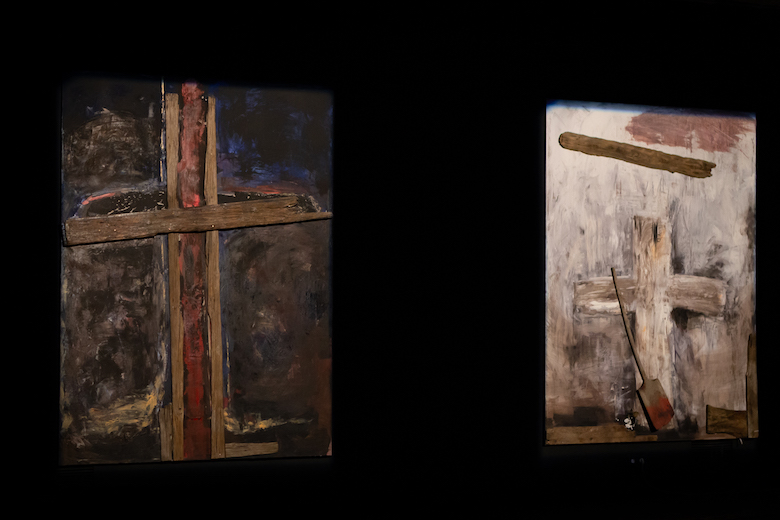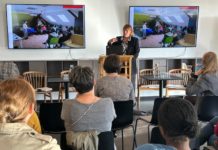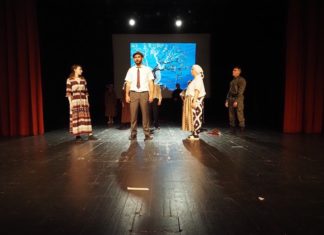In the long history of the Venice Biennale, at the 59th edition of this international art exhibition held in 2022, the presence of Roma art was ensured for the fourth time. Eugen Raportoru‘s exhibition The Abduction from the Seraglio presented under the curatorial eye of Ilina Schileru, focuses on the intimacy of the Roma home through various objects, i.e. installations recognizable and identifiable to many, as well as motifs of oriental wall carpets in Eastern European households. In the Roma Pavilion, Raportoru with his The Abduction from the Seraglio was accompanied by Roma women who offered alternative perspectives on the topic of Abduction through Performative Strategies of Resistance.
Very striking are the motifs of the oriental tapestry, a popular interior element in Romania before the regime change. What narrative do these motifs embody?
It’s about escape. At the time I was a child, these tapestries would find their way into people’s houses as a product that the communist regime would not question politically. For the entire population, living in the magical state was a strategy of resistance. So that is how I look at it. The depictions had no connection whatsoever to the grey and harsh reality we had to endure at that time.
What are your childhood memories that you keep coming back to, and which are viewed through this exhibition from the perspective of you as a child? What colors and images, as well as smells, predominate?
My childhood was harsh: although I grew up in a downtown area of Bucharest (the capital of Romania), it was a slum area with small houses glued next to each other, but that gave me a sense of community that people living in flats would not have. I would play all day with my neighbor’s kids. We didn’t have toys, so we would make them out of sticks and tires. I remember the smells coming from the ongoing kitchens, the dust in the street, and the greyish surroundings that covered the walls of our houses. And the colorful clothing of the women. They had impossible hard lives but they wore cheerful clothing.
You are the only Romanian artist of Roma origin who presented his works at the Royal Academy of Arts in London, but also at other impressive places throughout Europe, including the presentation of the Roma Pavilion at the 59th edition of the Venice Biennale. What impressions do you have after the end of the festival and how significant is the participation of artists of Roma origin at such exhibitions?
It has massive importance: the ongoing discrimination has also touched me during my entire life. I am a painter, I did not ask to be judged considering my ethnicity. I just like to paint, I was born to do this. But culturally, we as Roma, are seen as great musicians and dancers, not so much as painters. So if I cannot escape the narrative that is always brought up in discussion, I can tackle it. And there is a lot to talk about here. Because we have had a special kind of history as Roma, especially here, in modern-day Romania. My ancestors carry the trauma of enslavement. We feel it too, although I was born a free man. So I integrate that pain into my work today. I cannot ignore it anymore. I integrate it.
So you see, it is of great importance to have our pavilion at the Venice Biennale, it means we are being heard and seen, as we deserve! Gaining this visibility was not easy at all. ERIAC has worked for this since its birth, in 2017. And it is done with such tremendous effort from a team, from the ongoing and non-stop advocacy of Timea Junghaus and Zeliko Jovanovic. Timea was the curator of the first Roma Pavilion at the 52nd Venice Contemporary Art Biennale (2007). I did not get there all by myself (although sometimes I think I did, because I never doubted myself), but I got there just in time when every piece of the puzzle fell into place.
The themes of your works are also the Holocaust and Samudaripen. How much is discussed in Romanian society about these topics, as well as the fact of slavery in which the Roma were slaves of nobles, which was present for centuries?
To be direct, it is only discussed when there is the commemoration day, on August 2, and on liberation day from slavery in Romania, on February 20. Outside of that timeframe, no, there is no serious discussion on this topic. We had to be pushed from behind, by the European Union, to open on the subject. It was almost as tabu to talk about the slavery my ancestors had to live with. And now, we only have two days per year to remember, to make some speeches, to gather and cry about our suffering… We meet with political figures, and out of our ethnicity, and they promise programs for better integration, but all the integration I observe was made through personal achievements. Personal strength.


